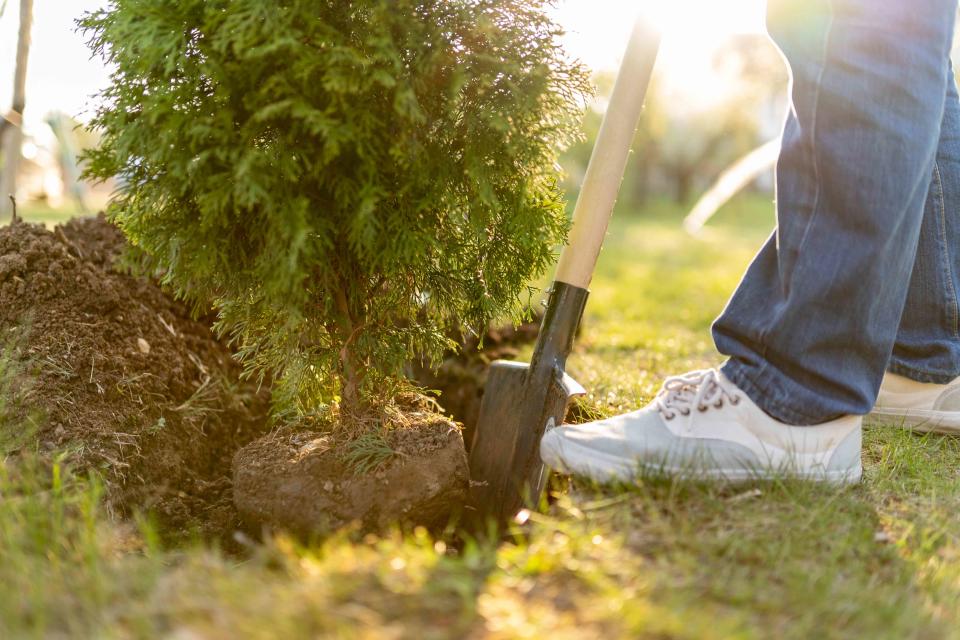The Power of Planting With a Purpose
When a person planting a tree is motivated by meaning, the tree itself can become unstoppable.

The ground is undisturbed. Maybe it’s in a forest, in a city park, or in your front yard. The moment is quiet. But the air is charged. It’s fueled by the energy of an impending change and the promise of a new legacy. Then, the silence is cracked open by the slice of a shovel breaking through the seal of the earth. The soil gives way, making room for the gentle roots of a young tree.
It looks like the beginning. But this is not the first chapter.
Tree plantings should be preceded by thoughtful planning and communication. Trees are proven to clean the air, cool our cities, and can have an immense impact on their surroundings. But to unlock every ounce of a tree’s power, we have to be purposeful in how we plant. Key factors like what tree to plant, when to plant it, and where are not arbitrary decisions. To breeze past these considerations is to leave untapped potential out on the table.
Trees are a tool, and we should be deliberate in how we use them.
For the Arbor Day Foundation—the world’s largest tree-planting nonprofit—this framework of intentionality is rooted in science, data, and technology. By measuring different components and layering data, we can determine the key regions where trees will do the most good. Our team is then able to analyze forests and neighborhoods based on both land classifications and socioeconomic factors. That includes things like income, education, and housing quality. This information allows us to identify what we call “areas of greatest need” and establish how trees might impact the existing climate, community, and biodiversity.
Once trees are activated in the right place, they can be a boundless force for good. For example, in 2012 a study done in Baltimore County, Maryland, showed that when tree canopy was increased by 10%, crime dropped by 12%. Ten years later, in 2022, scientists went a step further. They analyzed 301 major U.S. cities and found there was a strong relationship between an area’s crime rate and its urban greenspace. In all but three of the 301 cities studied, more greenspace equated to lower violent crime risk.
When planted in historically disadvantaged neighborhoods, trees can deliver health equity. Researchers have proven that communities of color often have more exposure to higher temperatures in urban areas. This heat island effect can lead to strokes, respiratory issues, and heat-related deaths. In fact, heat killed more people than any other natural disaster in 2021. In these areas planting trees can bring essential cooling and literally save lives.
Again, we don’t get to reap these incredible rewards without some forethought. Strategy is the name of the game.
The same idea can be applied in the fight against climate change. By planting in critical global forests, trees can help solve some of the world’s most pressing problems. A targeted approach to both large-scale reforestation and small-scale neighborhood plantings means understanding the past and present of the land and its surrounding community. Once you’ve accounted for that, then you can pick up a shovel and help grow the future.
Now, I want to be clear. I don’t say any of this to discourage you from planting that tree you just picked up at the nursery. Trees are generous. They almost always give.
But we know by planting them in the right place and at the right time, they can give more.
When the person planting a tree is motivated by meaning, the tree itself can become unstoppable.
Dan Lambe is CEO of the Arbor Day Foundation, the largest nonprofit membership organization dedicated to planting trees. He can be reached at dlambe@arborday.org.

